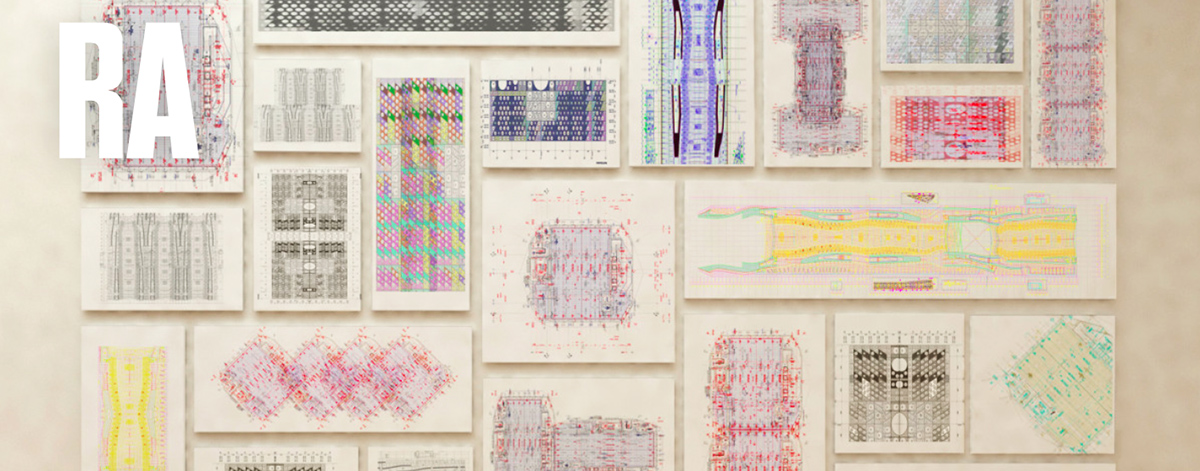Submitted by WA Contents
Farshid Moussavi will curate Architecture Gallery of RA’s Summer Exhibition
United Kingdom Architecture News - Jan 19, 2017 - 17:11 16586 views

Architect and Professor Farshid Moussavi, founder of Farshid Moussavi Architecture (FMA), will the Architecture Gallery of Royal Academy of Arts' Summer Exhibition, which will be held between 13 June-20 August 2017 at the Main Galleries, Burlington House, London.
The Royal Academy’s annual Summer Exhibition, held since 1979, is the world’s largest open submission contemporary art show. Now in its 249th year, the Summer Exhibition provides a unique platform for emerging and established artists to showcase works across painting and printmaking, photography, sculpture, architecture and film.
The Summer Exhibition attracts a high volume of entrants annually, with 12,000 entries received in the 2016 show. Farshid Moussavi will curate Architecture Gallery of the RA's Summer Exhibition by exploring different assemblages of construction coordination darwings, which will celebrate architecture as an 'instruction-based art'.

Farshid Moussavi architecture gallery 2017. Image courtesy of The RA
In a message released by the curator Farshid Moussavi, she offers some thoughts and guidance for those considering submitting their work.
''Contributors/exhibitors are invited to send in construction coordination drawings that show the interrelationships and full complexity of the different systems and parts of buildings, preferably with each system colour coded. Such drawings will present a rare view of buildings to the public, as if inviting them ‘backstage" in a theatre,'' says Farshid Moussavi.
The RA accepts 12,000 entries each year and for the first round of the selection process, artists are asked to submit digital photographs of their work online. For the next stage of the application process, judges will shortlist up to 4,000 entries to be delivered to the Academy for a second round.
The RA's Summer Exhibition represents what is happening in the art world right now. New and recent art created by everyone from emerging artists to the biggest names in contemporary art and architecture.
Farshid Moussavi was elected in March 2015 to curate the exhibition.
Read the full message of Farshid Moussavi about the RA's Summer Exhibition below:
In 2017, the Architecture Room at the RA Summer Exhibition will celebrate architecture as an ''instruction-based art''.
A building’s “architecture” is its assemblage; the way that it brings all of its physical elements together with its colours, textures, shapes and forms to make rooms and open spaces with a distinct presence or “thisness”, whilst incorporating the many separate, distinct and irreconcilable challenges that a building must address today such as space planning, security, rights-of-light, fire engineering, sustainability engineering, façade engineering or health and safety. Despite the presence of constraints of many kinds – size, cost, time, regulations etc. – the architect must determine how the different disciplines are to interrelate, what is to be experienced and how, what is to become visible and not visible, audible and inaudible, and what will be present or absent in people’s experiences of buildings as they go about their everyday activities.
Whereas a painting is the final thing a painter produces and a sculpture the final thing a sculptor produces, the architect’s final act does not result in the building itself, but a set of instructions for the architecture of the building. These are then delivered not in the confines of the gallery, but on a site that is fully exposed to the elements, as well as the dynamics of several years that it takes for hundreds, if not thousands, of builders to carry out the instructions. Meanwhile, the architect remains both legally and morally accountable for the type of attachments his or her instructions lead to between the building and people and things that come to engage with its architecture.
Construction coordination drawings, as distinct from images and maquettes which architects use to represent conceptual ideas and convey the image of the intended building to its patrons and users, are the spaces in which architects assemble and communicate their instructions. In them, architects make practical as well as aesthetic decisions, and describe precisely how all the elements of a building, such as pipes, studs, conduit, expansion joints, ducts, doors, windows, structure, stairs, lighting fixtures, walls, roofs etc. are to be assembled, and what part they are to play in the experience of a building’s architecture. Construction coordination drawings therefore show the full complexity of a building, like an X-ray, beyond the visible elements of a building.
Contributors/exhibitors are invited to send in construction coordination drawings that show the interrelationships and full complexity of the different systems and parts of buildings, preferably with each system colour coded. Such drawings will present a rare view of buildings to the public, as if inviting them ‘backstage" in a theatre.
------
Farshid Moussavi is an architect, principal of Farshid Moussavi Architecture (FMA) and Professor in Practice of Architecture at Harvard University Graduate School of Design. Moussavi also co-founded the London-based Foreign Office Architects (FOA), recognised as one of the world’s most creative design firms, integrating architecture, urban design, and landscape architecture in a wide range of projects internationally. Her most notable projects include the Museum of Contemporary Art in Cleveland, the Victoria Beckham flagship store in London and the John Lewis department store in Leicester.
Educated at Harvard’s Graduate School of Design, University College London and Dundee University, Moussavi has taught and served as External Examiner in academic institutions worldwide. She has also been a member of the Steering Committee of the Aga Khan Award for Architecture since 2004, and a trustee of the London Architecture Foundation and the Whitechapel Gallery in London since 2009. Moussavi is a columnist for the Architectural Review magazine and has published three books, The Function of Ornament, The Function of Forms, and The Function of Style based on her research and teaching at Harvard.
Farshid Moussavi is Honorary Member of World Architecture Community and voting the shortlisted projects in all Cycles of WA Awards.
Top image © Elizabeth Sulis Gear
> via The RA
